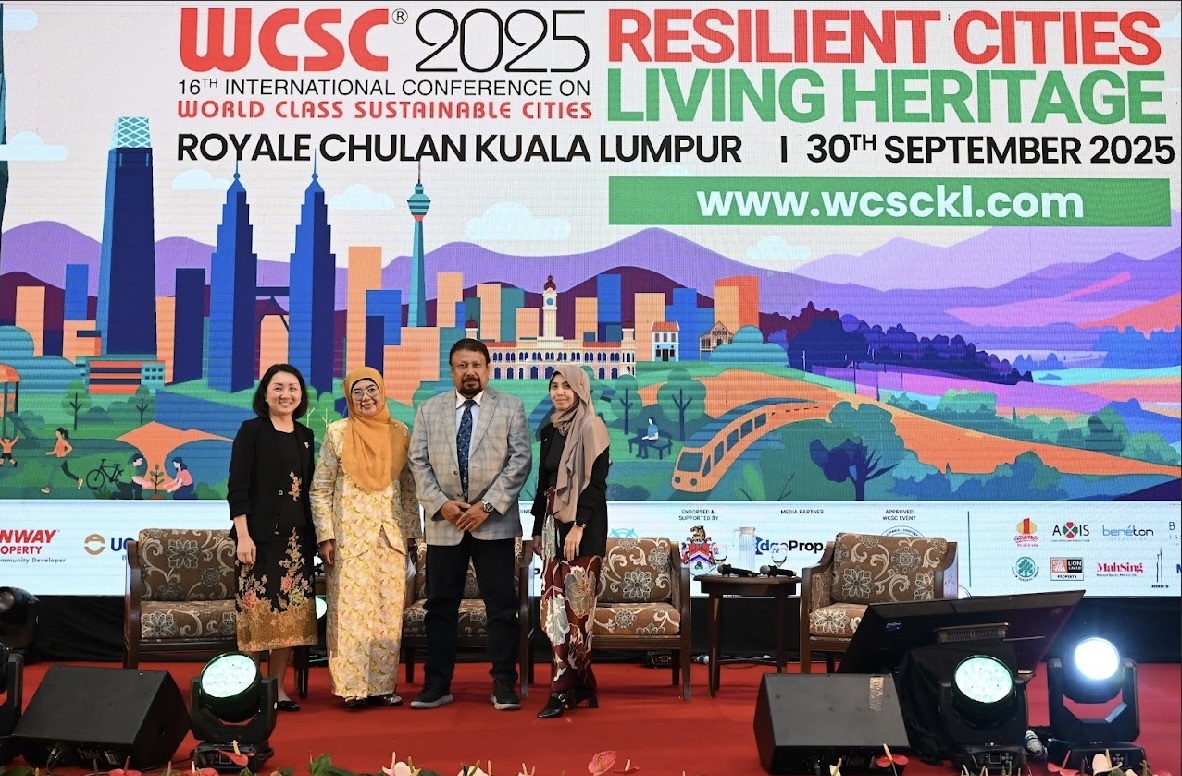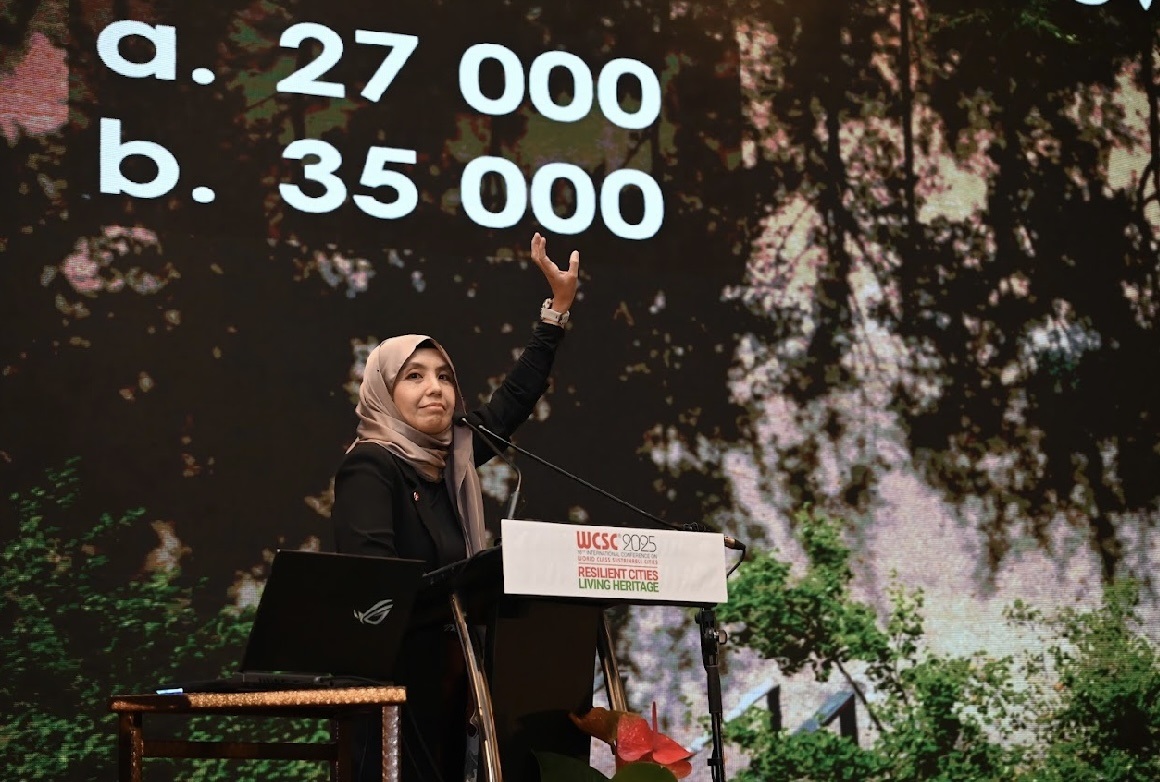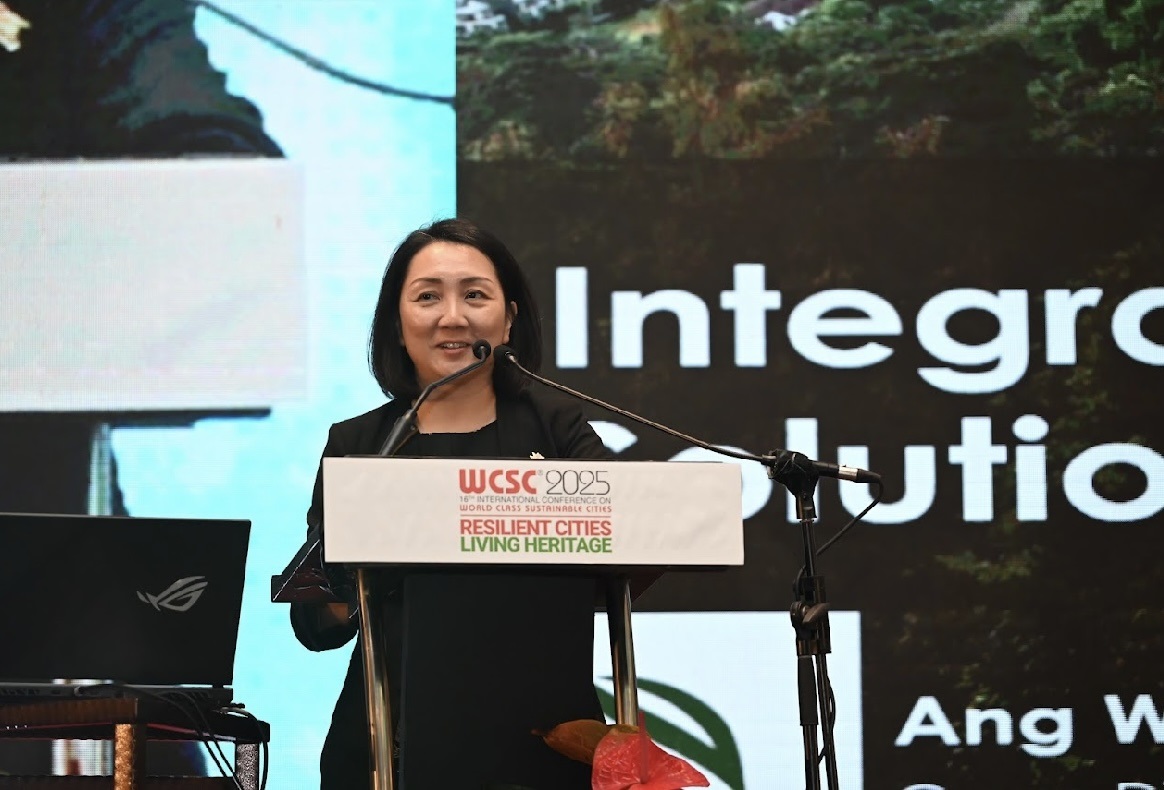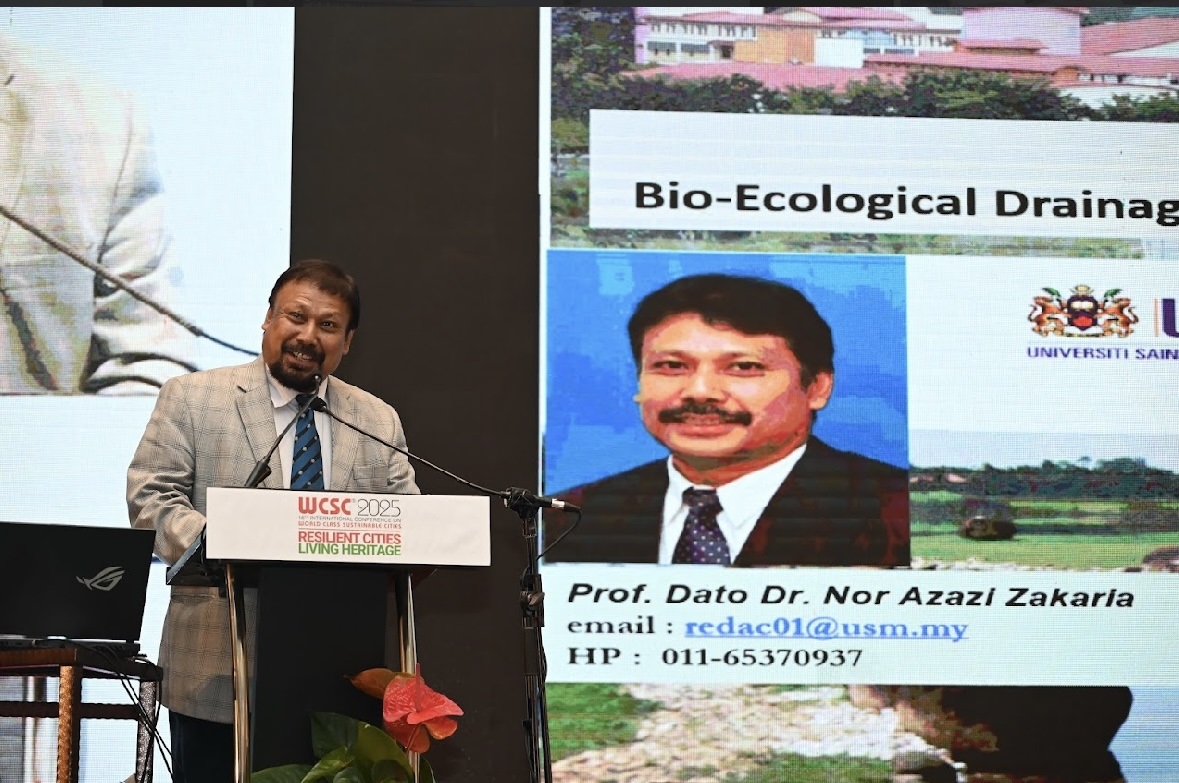
- Industry leaders from Malaysia and Singapore stressed the urgency for sustainable urban developments, showcasing examples of low-carbon, biodiversity-focused projects, nature-based solutions and water management for climate-resilient cities.
KUALA LUMPUR (Oct 1): Approximately 27,000 trees are cut daily for paper production, equivalent to 9.8 million trees annually.
Gamuda Land executive director LAr Khariza Abd Khalid highlighted this at the 16th International Conference on World Class Sustainable Cities (WCSC) 2025 held here on Tuesday.
In her presentation, she stressed the cooling benefits of urban tree planting and the benefits of recycling, as well as water and energy conservation.
Citing the developer’s sustainability initiatives across its infrastructure and township projects in Malaysia and abroad, she showed how Yen So Park in Vietnam has been transformed from degraded land into a stormwater-managed community hub; how a former plantation in Rawang, Selangor has been converted into a five-acre central park with 8,000 trees and diverse habitats; and how Gamuda Cove in Selangor has been developed with a focus on ecological balance and recognised as a low-carbon township.

Khariza said Gamuda Land’s masterplans integrate biodiversity audits, conservation efforts and nature-based solutions prior to construction. She added that its low-carbon city framework targets a 45% reduction in carbon emissions by 2030, and 30% by 2050, with strategies covering energy, urban transport and sustainable design.
She highlighted mandatory green building standards, solar adoption, passive ventilation, energy-efficient fittings and industrialised building systems to cut waste. Plans also include walkable neighbourhoods, cycling paths, e-trams and community-centric spaces.

On biodiversity, she highlighted the adoption of 100% native species, habitat creation, and water-sensitive urban design. She also showcased the Wetland Arboretum Centre in Gamuda Cove, Malaysia’s first net-zero carbon building, which operates entirely on solar energy, integrates stormwater management, and promotes community farming and environmental education.
In a separate session, Singapore’s National Parks Board group director of policy and planning Ang Wei Ping underscored the urgency of integrating nature-based solutions into urban planning. She said Singapore’s “City in Nature” vision, launched in 2020, seeks to restore and weave greenery into the built environment to mitigate climate impacts, enhance resilience and improve liveability. Strategies include conserving reserves, expanding ecological corridors and embedding green infrastructure such as naturalised waterways and park connectors within neighbourhoods and buildings.

River Engineering and Urban Drainage Research Centre (Redac) honorary professor Datuk Dr Nor Azizi Zakaria reflected on Malaysia’s water management challenges. He noted that despite higher-than-average rainfall, the country still faces shortages due to storage and governance gaps.
He called for greater rainwater harvesting, better architectural design and integrated cross-ministry policies, while showcasing Redac’s projects in stormwater management and campus-scale sustainable water solutions.
WCSC 2025, themed “Resilient Cities, Living Heritage”, is organised by the Malaysian Institute of Planners (MIP), Real Estate and Housing Developers’ Association (Rehda) Malaysia and the Malaysian Institute of Architects (PAM), in collaboration with Kuala Lumpur City Hall (DBKL) and EdgeProp as media partner.
As Penang girds itself towards the last lap of its Penang2030 vision, check out how the residential segment is keeping pace in EdgeProp’s special report: PENANG Investing Towards 2030.





